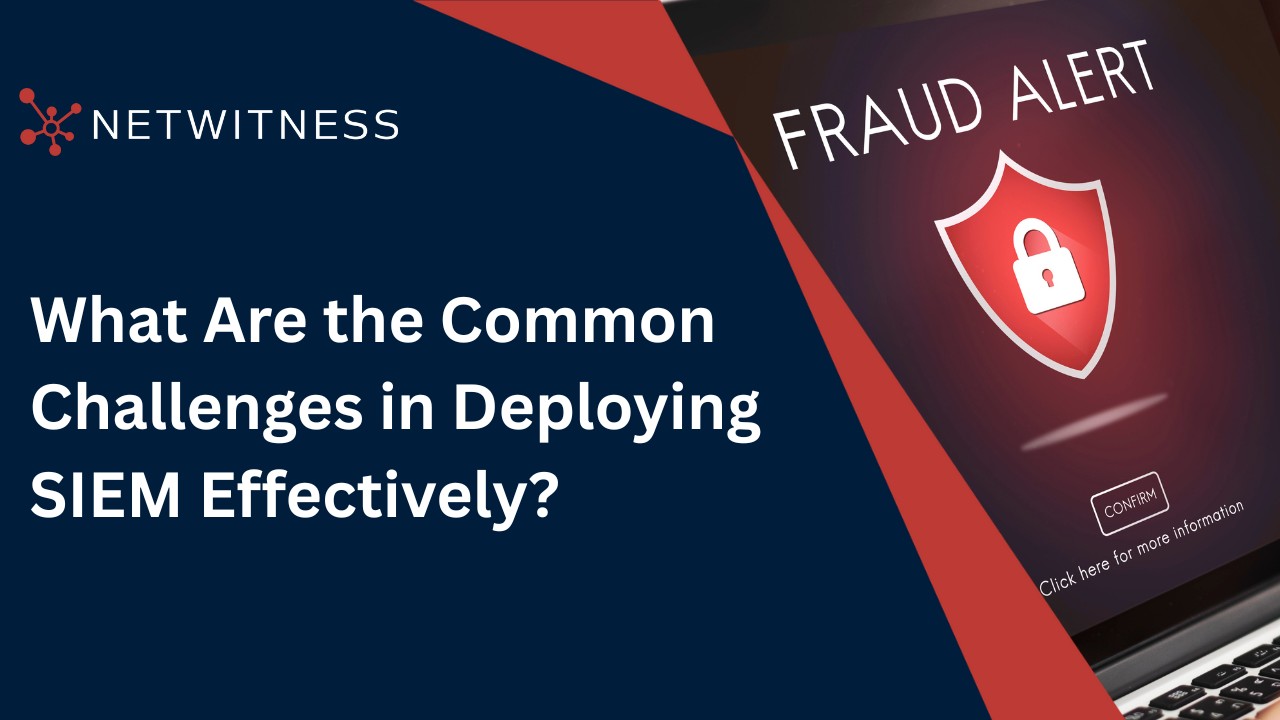
In today’s complex cyber landscape, organizations are generating massive amounts of security data every second — from firewalls, servers, endpoints, and applications. To make sense of this data and detect potential threats, many organizations rely on Security Information and Event Management (SIEM) solutions.
A well-implemented SIEM can act as the central nervous system of a Security Operations Center (SOC), offering real-time visibility, correlation of security events, and faster incident detection. However, despite its potential, many organizations struggle to deploy SIEM effectively and fail to realize its full value.
Let’s explore the most common challenges in deploying and managing SIEM systems, and how organizations can overcome them for better threat visibility and operational efficiency.
1. Data Overload and Log Management Complexity
One of the biggest challenges in SIEM deployment is managing the massive volume of logs generated across diverse systems. Networks, endpoints, applications, and cloud platforms continuously produce millions of events daily. Without proper filtering or normalization, this flood of data can overwhelm the SIEM, leading to performance bottlenecks and missed alerts.
Furthermore, logs come in various formats — making data normalization and correlation difficult. Inconsistent data quality can hinder threat detection and increase false positives.
Solution:
Adopt a log management strategy that prioritizes critical data sources. Implement data filtering, parsing, and normalization rules to ensure only relevant, high-value events are sent to the SIEM. Cloud SIEM security with scalable data storage can also handle large volumes more efficiently.
2. High Implementation and Operational Costs
Deploying and maintaining a SIEM solution can be expensive and resource intensive. Costs include software licensing, infrastructure, skilled personnel, and ongoing maintenance. Traditional on-premises SIEMs often require extensive hardware and storage investments, while cloud-based SIEMs incur continuous data ingestion and retention costs.
Organizations that underestimate these expenses may face budget overruns or incomplete implementations.
Solution:
Before deployment, conduct a thorough cost-benefit analysis and choose a deployment model (on-premises, cloud, or hybrid) aligned with organizational goals. Many modern SIEMs offer flexible pricing models, allowing organizations to scale cost-effectively. Automation can also reduce the human workload associated with maintenance and monitoring.
3. Lack of Skilled Personnel and Expertise
Effective SIEM management requires highly skilled analysts capable of configuring correlation rules, interpreting alerts, and conducting threat investigations. However, the global cybersecurity talent shortage makes it difficult for many organizations to find and retain qualified professionals.
Without proper expertise, SIEM tools often become “alert generators” rather than proactive security systems.
Solution:
Invest in training and skill development for SOC analysts and consider managed security service providers (MSSPs) or co-managed SIEM models to fill skill gaps. Leveraging AI-driven analytics and automation can also help reduce dependency on manual intervention.
4. Excessive False Positives and Alert Fatigue
SIEMs are designed to generate alerts based on correlation rules and threat intelligence. However, poorly configured SIEMs often produce excessive false positives, overwhelming analysts and leading to alert fatigue. Over time, critical alerts may be overlooked, increasing the risk of missed incidents.
Solution:
Continuously tune correlation rules and update detection use cases based on threat intelligence and organizational context. Implement behavioral analytics and machine learning to reduce noise by focusing on high-risk anomalies and verified threats.
5. Integration Challenges with Other Security Tools
A SIEM’s effectiveness depends heavily on how well it integrates with other tools such as EDR, NDR, SOAR, and threat intelligence platforms. However, many SIEM deployments struggle with integration issues due to incompatible APIs, legacy systems, or inconsistent data formats.
This lack of interoperability can create data silos, limiting the SIEM’s ability to provide holistic threat visibility.
Solution:
Choose a SIEM that supports open APIs, standard log formats, and third-party integrations. Modern SIEMs often come with native connectors and SOAR integration capabilities, enabling seamless automation across different security tools.
6. Poor Use Case Development and Correlation Rules
Many SIEM solutions fail because organizations do not define clear detection use cases. Without targeted correlation rules, the SIEM cannot distinguish between benign activity and real threats. This leads to either under-detection or over-alerting.
Solution:
Develop a library of relevant use cases based on frameworks like MITRE ATT&CK and organizational threat models. Continuously refine correlation rules based on incident feedback and threat intelligence to improve detection accuracy.
7. Scalability and Performance Issues
As organizations grow, so does the volume of data ingest into the SIEM. Without proper scaling, performance can degrade — leading to delays in log ingestion, slow searches, and missed detections. Legacy SIEM architectures often struggle to handle modern, high-velocity data streams.
Solution:
opt for cloud-native or hybrid SIEM architectures that automatically scale with data growth. Use tiered storage to separate hot, warm, and cold data — ensuring that recent logs remain accessible for analysis while older logs are archived cost-effectively.
8. Difficulty in Demonstrating ROI
Executives often question the return on investment (ROI) of SIEM systems because the benefits are not always tangible. If a SIEM isn’t properly configured or maintained, it can appear as a cost center rather than a value driver.
Solution:
Track key performance indicators (KPIs) such as reduced detection time, incident response improvements, and threat coverage. Demonstrating measurable security improvements helps justify ongoing investments and ensures leadership support.
Conclusion
Deploying a SIEM solution effectively requires more than just technology — it demands strategy, expertise, and continuous optimization. The most common challenges, from data overload and false positives to integration and scalability issues, can significantly impact performance if left unaddressed.
By adopting a strategic approach — including clear use case development, automation, and skilled personnel — organizations can transform their SIEM from a log collection tool into a powerful threat detection and response engine.
Ultimately, an effectively deployed SIEM enhances visibility, strengthens the SOC’s capabilities, and serves as the foundation for a proactive and intelligent cybersecurity posture.


